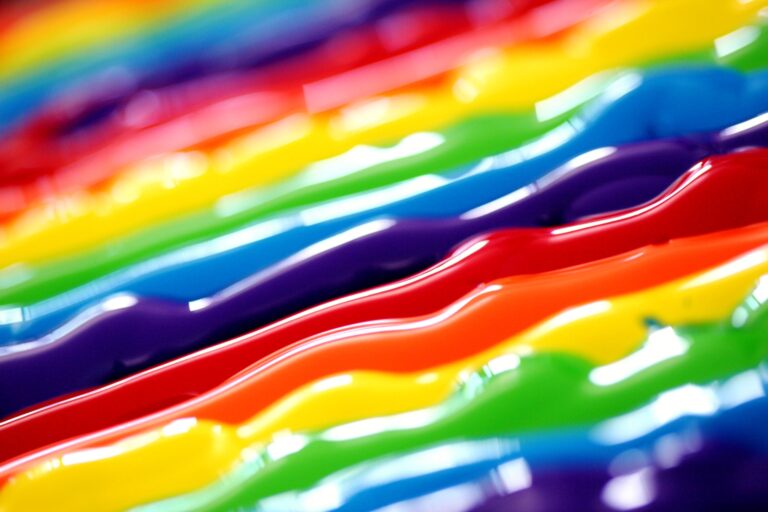Polyurethane Modified Waterborne Alkyd Resin Coatings
Polyurethane modified waterborne alkyd resin PUA-1642 was chosen as a film-forming substance and a waterborne alkyd resin coating was prepared. The effects of driers, defamers and different pigment base ratios on the properties of the coating were discussed. When ZH-101 was drier, the drying performance was good. When BYK-028 was an anti-foaming agent,the paint film looked normal. Coating properties in different pigment base ratios met the industry standards,there was a large design space to adjust the formulation according to the performance requirements. Polyurethane modified waterborne alkyd resin coating had the advantages of fast drying,long storage period,good water resistance and very low VOC. It had been applied on a large scale in the field of light industrial anti-corrosion.
With the growth of China's economy, the nation is paying more and more attention to environmental protection. The paint industry, as one of the major VOC contributing industries, emitted 5.91 million tons of VOCs related to painting use in 2012. For this reason, the country has introduced a lot of laws and regulations to control VOC emissions in the paint industry. For example, the Ministry of Environmental Protection (MEP) issued the 13th Five-Year Plan for the Prevention and Control of VOC Emissions in the Paint Industry. For example, the Ministry of Environmental Protection issued the "13th Five-Year Plan for Prevention and Control of Volatile Organic Compounds Pollution", which requires a significant reduction of industrial coating VOCs emissions from industrial painting. Solvent-based alkyd resin coatings have become the most used in the light anti-corrosion field due to their good overall performance and high-cost performance. The most used product in the field of light anti-corrosion. Water-based alkyd resin coatings The water-based alkyd resin coatings use water as the dispersion medium, which can significantly reduce the VOC emissions and reduce the VOC emissions during the production, transportation, and use of coatings.
The use of water-based alkyd resin coatings as a dispersion medium can significantly reduce VOC emissions and hazards during the production, transportation, and use of coatings. The use of waterborne alkyd resin coatings instead of The use of water-based alkyd resin coatings instead of solvent-based alkyd resin coatings is one of the important directions for the green and sustainable development of the coating industry. One of the most important directions for the green and sustainable development of the coating industry is to use water-based alkyd resin coatings instead of solvent-based ones.
Although waterborne alkyd resin coatings can avoid environmental Although waterborne alkyd resin coatings can avoid the environmental pollution problems caused by organic solvents, waterborne alkyd resin coatings usually have many problems, such as slow drying, poor water resistance, and Therefore, it is important to develop a waterborne alkyd resin coating that avoids these problems. Therefore, it is promising to develop a waterborne alkyd resin coating that avoids the above problems. In this paper, polyurethane
General aqueous alkyd resins suffer from poor drying properties, poor water resistance, and easy hydrolysis of ester bonds. To solve these problems, aqueous alkyd resins are generally modified by acrylic acid or polyurethane.
Acrylic modification of aqueous alkyd resins includes the prepolymer method and copolymer method. The prepolymer method refers to the use of acrylic acid oligomers instead of polyacrylic acid modified alkyd resins because the carboxyl group neutralized with amine is attached to the C-C bonded acrylic acid polymer backbone, avoiding ester bond hydrolysis, and can obtain aqueous alkyd resins with good storage stability. However, since co-solvents are generally required for homogeneous dispersion in water, this type of waterborne alkyd generally contains 25% to 30% co-solvents in the market, and the VOC of coatings prepared with this type of waterborne alkyd resin is still relatively high. The copolymer method involves the modification of alkyd resin molecules by copolymerization and grafting reactions between the conjugated double bonds of oil or fatty acids or maleic anhydride and acrylate monomers. It can be a solution polymerization method or an emulsion polymerization method. Because it is mainly a mixture of self-polymerization and copolymerization products, the composition is not homogeneous, which affects the appearance performance of the resin and has the disadvantages of low gloss and poor fullness. At the same time, the copolymerization process consumes the double bond, the molecular weight is increased, and the surface drying performance can be improved, but the double bond of the later oxidation cross-linking is reduced, which does not improve the real drying performance much.
Polyurethane resin synthesized from isocyanate contains a large number of ammonia ester bonds and urea bonds, and these bonds contain more proton donors and acceptors that can form hydrogen bonds. The presence of hydrogen bonds improves the mechanical properties of the resin such as better wear resistance, higher hardness, better adhesion, and chemical resistance are improved. Although hydrogen bonds cannot be formed between ester bonds in alkyd resins, the introduction of urethane bonds and urea bond structures after modification with polyurethane can form a certain amount of hydrogen bonds, which can improve the drying rate, hardness, and water resistance of alkyd resins. Although there have been some domestic reports on polyurethane-modified waterborne alkyd, most of these resins contain some co-solvents. At the same time, the polyurethane modified waterborne alkyd resins that have been put into production and started to be sold are actually In this paper, a polyurethane modified aqueous alkyd resin was selected.
In this paper, a polyurethane modified aqueous alkyd resin PUA-1642 was selected to prepare coatings, and its performance was tested and obtained good results in practical applications. In this paper, a polyurethane modified waterborne alkyd resin, PUA-1642, was selected to prepare coatings and its performance was tested. Table 2 shows the basic parameters of PUA-1642, a polyurethane modified aqueous alkyd resin. The basic parameters of PUA-1642 are shown in Table 2. Compared with water-diluted alkyd resins commonly found in the market, this resin does not use co-solvents and its VOC is extremely low. The VOC of this resin is very low, about 10 g/L, compared with the water diluted alkyd on the market.
The polyurethane modified waterborne alkyd resin has been used in the mass production of different series of waterborne coatings and has been well applied in different waterborne industrial light anti-corrosion fields. For example, the high-gloss waterborne topcoat prepared with PUA-1642 has good early water resistance, fast drying, very low VOC (≤30 g/L), and good weather resistance, which is suitable for surface decoration of electromechanical equipment, large outdoor steel structures, and storage tanks. By adjusting the addition amount of PUA-1642 resin and controlling the color-base ratio from 1.1 to 1.3, the water-based primer can be prepared with fast-drying, good rust resistance, and excellent early water resistance, which is suitable for the anti-corrosion and decoration of electromechanical equipment and small steel structures.
The polyurethane modified waterborne alkyd resin was selected as the film-forming substance, and suitable catalysts and defoamers were selected to prepare the waterborne paint. The film-forming material of polyurethane modified waterborne alkyd resin, a suitable catalyst, and defoamer are selected to produce a fast-drying, high hardness, long storage period, good water resistance, and very low VOC paint. The polyurethane modified waterborne alkyd resin coating with fast-drying, high hardness, long storage period, good water resistance, and very low VOC was prepared. For different, The water-based alkyd resin has been used to prepare a series of water-based coating products for different performance requirements. and has been widely used in the application of mechanical and electrical equipment, large outdoor steel structures, small steel structures, mechanical parts, etc. It has been widely used in the fields of electromechanical equipment, large outdoor steel structures, small steel structures, mechanical parts, etc., and has achieved a good coating effect.




